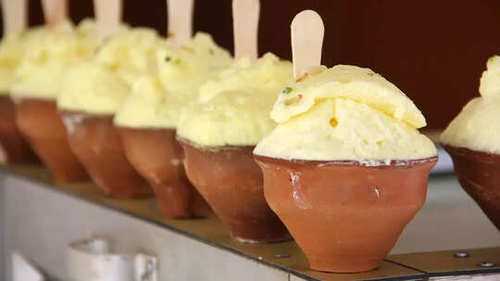
The ancient lanes of Varanasi hold a wealth of experiences, both to those who come to worship at its temples and those who come to worship at its street food spots. Among its vibrant street food culture, lies a mysterious winter delicacy that appears for a fleeting three months a year from November to February - Malaiyo. This ethereal dessert, known in some parts of North India as Nimish or Makhan Malai, is a sweet treat and a testament to the city's centuries-old culinary heritage.
History Of MalaiyoThe origins of Malaiyo are said to be rooted in Varanasi's Chaukhamba area, from where this unique preparation spread to other parts of the city. One fascinating origin story suggests that local residents discovered it whilst trying to prevent milk from spoiling by leaving it exposed under the night sky. By morning, they found that dewdrops had transformed the milk into a naturally frothy delight, which when sweetened, became a beloved breakfast speciality. What Makes Malaiyo UniqueWhat makes Malaiyo truly remarkable is its strict adherence to nature's timeline. Available only during the winter months, this dessert demands specific weather conditions for its creation. The preparation begins the evening before, when fresh cow's milk is boiled in large iron woks, known locally as 'lohe ki kadhai'. The use of iron vessels serves a dual purpose - ensuring even heat distribution and naturally fortifying the milk with iron. The most crucial step in crafting Malaiyo occurs under the stars. After the initial boiling, the milk is left exposed to the winter night sky, allowing dew drops to work their magic. This natural interaction between the milk and morning dew creates the foundation for Malaiyo's distinctive cloudy texture. Come dawn, skilled artisans spend roughly three hours churning this milk, gradually incorporating saffron strands, cardamom powder, and sugar until it transforms into a delicate, pale yellow foam.The authentic Malaiyo experience comes with its own set of rules. True connoisseurs know that this delicacy must be consumed before 11 AM, as the rising temperature causes the delicate foam to dissolve. While some vendors attempt to preserve the foam throughout the day using trans fats and additives, purists argue this compromises both the taste and the tradition.Many believe the best place to savour this winter sweet is in Thatheri Bazar, nestled in old Varanasi but everyone has their own preferences. Here, vendors serve the Malaiyo in traditional earthen vessels (kulhads), garnished with finely chopped pistachios and almonds. The experience is uniquely ceremonial - as the foam dissolves on one's tongue, leaving behind a rich, sweet taste, the kulhad is smashed to the ground. The ritual concludes with a 'chaser' of saffron-infused milk, providing a fitting end to this gastronomic journey.The journey to find authentic Malaiyo takes visitors through the narrow, winding streets of old Varanasi, offering glimpses of the city's celebrated cultural mosaic. These lanes, with their centuries-old shops and homes, serve as living museums where traditions like Malaiyo continue to thrive despite modernisation.What makes this dessert particularly special is its resistance to commercialisation. Despite its popularity, Malaiyo remains a seasonal specialty that cannot be mass-produced or preserved. Its dependence on natural elements - winter temperatures, morning dew, and precise timing - ensures it remains a truly artisanal creation.